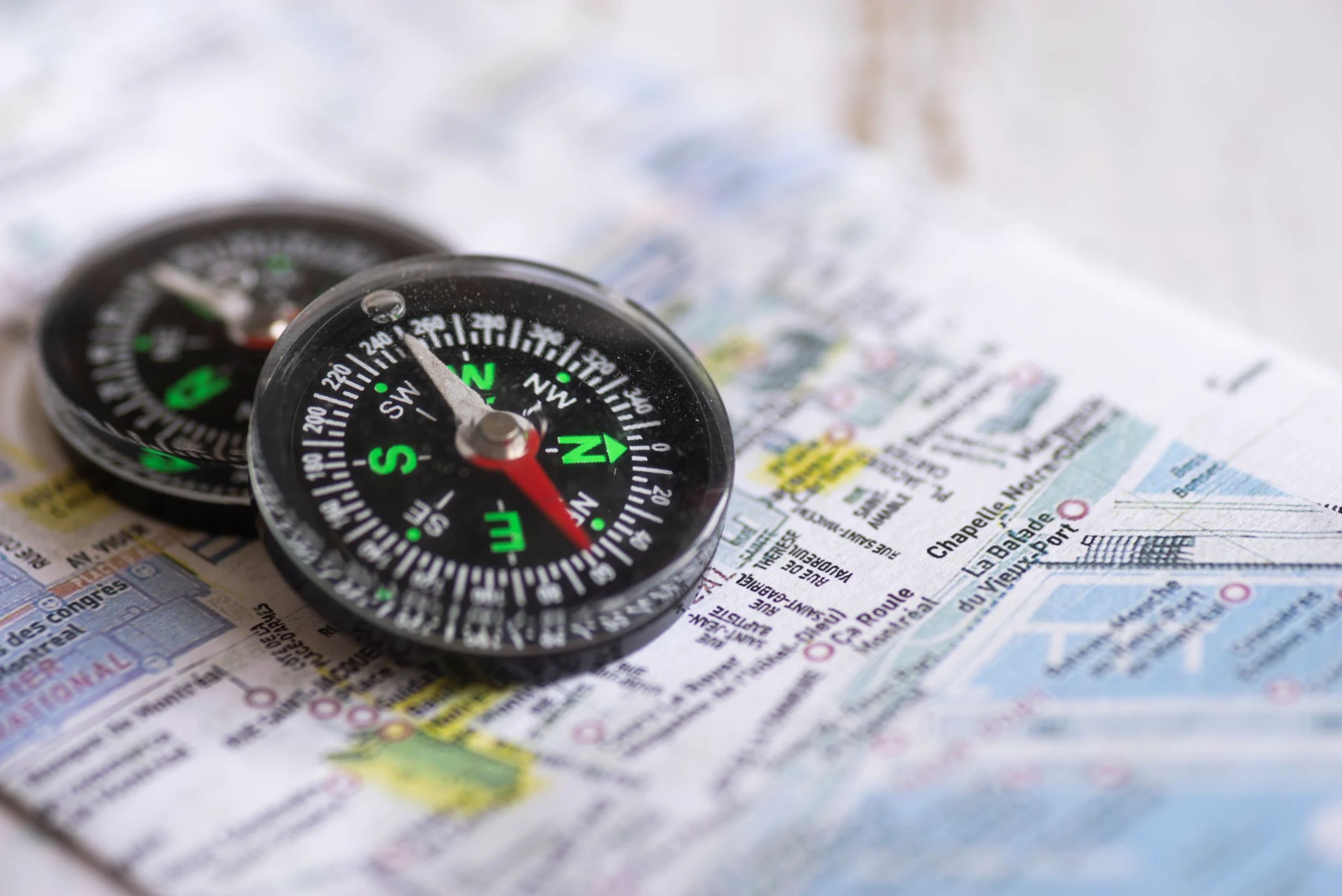Navigating the world has always been a fundamental aspect of human exploration and adventure. One of the oldest and most reliable tools for determining direction is the compass. This simple yet ingenious device has guided sailors, explorers, and hikers for centuries. In this article, we will explore the mechanics of a compass, how it determines direction, and its various applications. By the end, you’ll have a clear understanding of why this classic navigational tool remains indispensable.
The Basics of a Compass
A compass is a device used for navigation and orientation that shows direction relative to the Earth’s magnetic poles. It relies on the Earth’s magnetic field to point towards magnetic north, providing a reference direction for travelers.
1. Components of a Compass
To understand how a compass works, it’s essential to know its basic components:
- Magnetic Needle: The needle is the primary component that aligns itself with the Earth’s magnetic field. It is typically a thin, lightweight magnet balanced on a pivot point.
- Compass Housing: This is the case or container that holds the magnetic needle. It often has a transparent cover allowing visibility of the needle and directional markings.
- Graduated Dial: The dial or bezel is marked with degrees (0 to 360) and cardinal directions (North, East, South, West). It helps in precise direction finding.
- Baseplate: In modern compasses, especially those used for hiking or orienteering, the baseplate often includes additional features like a ruler, magnifying glass, or level.
2. The Earth’s Magnetic Field
A compass works by aligning itself with the Earth’s magnetic field. The Earth generates a magnetic field through its molten iron core, which acts like a giant magnet with magnetic north and south poles. The magnetic field extends out from the Earth’s core and surrounds the planet.
The magnetic field lines run from the magnetic south pole to the magnetic north pole. A compass needle, being a small magnet, aligns itself along these magnetic lines, pointing towards the magnetic north pole.
How a Compass Determines Direction
Understanding how a compass determines direction involves delving into the physics of magnetism and the Earth’s magnetic field.
1. Magnetism and Magnetic Poles
Magnetism is a physical phenomenon produced by the motion of electric charges. Every magnet has a north and south pole. Opposite poles attract each other, while like poles repel each other. The Earth itself is a giant magnet with a magnetic north and south pole.
When you use a compass, the magnetic needle aligns itself with the Earth’s magnetic field. The north end of the needle, which is often marked or colored differently, points towards the Earth’s magnetic north pole. By referencing this direction, you can determine the other cardinal directions.
2. Declination and Variation
One crucial factor in compass navigation is declination, also known as magnetic variation. Declination refers to the angle between magnetic north (as indicated by the compass) and true north (geographic north).
- Magnetic Declination: This varies depending on your location on Earth. The difference between magnetic north and true north can affect accuracy. Maps often provide information on the local declination, allowing you to adjust your compass readings accordingly.
- Adjusting for Declination: Modern compasses may have built-in adjustments for declination. For older models or manual navigation, you can apply the declination correction by adding or subtracting the angle from your compass reading.
3. Using a Compass for Navigation
To use a compass effectively for navigation:
- Hold the Compass Level: Ensure the compass is held flat and level so the needle can move freely.
- Align the Needle: Rotate the compass housing until the magnetic needle aligns with the north marking on the dial.
- Read the Direction: Once aligned, the direction you’re facing or the bearing you’re on is indicated by the direction of the needle and the corresponding degree on the dial.
- Map Integration: When using a map, you can use the compass to determine your heading and plot your course. Align the compass with the map’s north, adjust for declination, and follow the bearing to reach your destination.
Applications of a Compass
The compass is a versatile tool used in various fields beyond basic navigation.
1. Outdoor Activities
For hikers, backpackers, and adventurers, a compass is crucial for orienting oneself in unfamiliar terrain. It helps in route planning, ensuring you stay on the right path, and in emergency situations where GPS may not be available.
2. Maritime Navigation
Sailors and navigators use compasses for course plotting and maintaining heading. Marine compasses are often mounted on ships and boats, aiding in safe and accurate navigation over long distances.
3. Aviation
Pilots rely on compasses for navigation, particularly in situations where GPS signals may be unreliable. Aircraft compasses are designed to withstand the high-speed and high-altitude conditions of flight.
4. Orienteering and Sports
In orienteering competitions, participants use compasses to navigate through courses. Accurate compass skills are essential for determining direction and distance, making it a key component of the sport.
Conclusion: The Timeless Utility of the Compass
The compass is a remarkable tool that has stood the test of time. Its ability to determine direction using the Earth’s magnetic field makes it invaluable for navigation, exploration, and various other applications. Whether you’re an outdoor enthusiast, sailor, pilot, or simply interested in the mechanics of navigation, understanding how a compass works enriches your appreciation of this classic device.
By grasping the principles of magnetism, magnetic declination, and practical compass use, you can navigate confidently and accurately, making the compass an enduring and reliable companion in your journey through the world.
Incorporating keywords such as “how a compass works,” “magnetic field and compass,” and “compass navigation” ensures the article is both informative and optimized for search engines. This comprehensive guide should provide readers with a clear understanding of the compass’s functionality and its importance in navigation.


